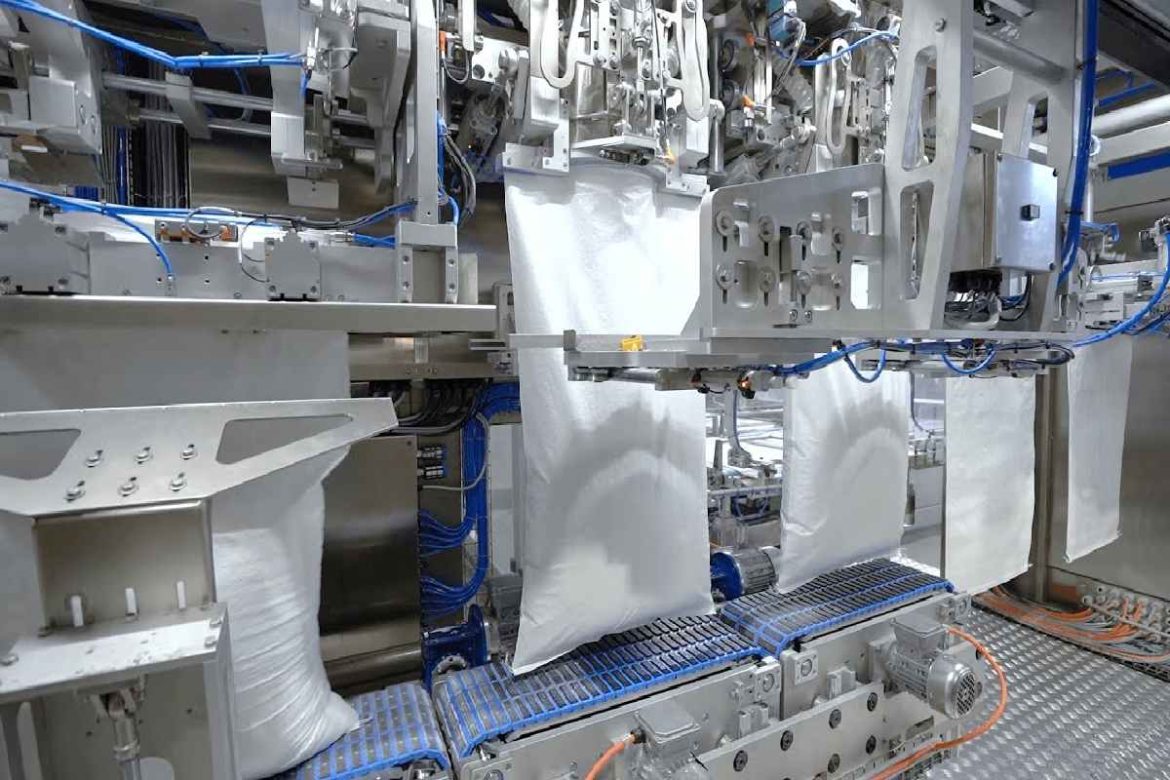In various industries and applications, efficiently collecting and managing waste materials is crucial. Bagging equipment plays a vital role in this process, streamlining waste collection and promoting a clean and organized work environment. This comprehensive guide explores different types of bagging equipment, their applications, and factors to consider when choosing the right equipment for your needs.
Understanding Bagging Equipment
Bagging equipment refers to machinery designed to fill bags with various materials. These machines automate the bagging process, improving efficiency and reducing manual labor. Bagging equipment can be used in various industries, including:
- Manufacturing: For collecting production waste, trimmings, or byproducts.
- Agriculture: For packaging and handling crops, seeds, or fertilizers.
- Construction: For collecting dust, debris, or leftover building materials.
- Retail: For packaging bulk goods like groceries or pet food.
- Waste Management: For collecting and managing various types of waste materials.
Types of Bagging Equipment
The specific type of bagging equipment best suited for your needs depends on the materials you’re handling, bag size and type, and desired production rate. Here’s an overview of some common types of bagging equipment:
- Form-Fill-Seal (FFS) Machines: These versatile machines automatically create bags from rolls of film, fill them with the product, and seal them shut. FFS machines are suitable for a wide range of bag types and materials and offer a high degree of automation.
- Open-Mouth Bagging Machines: These machines fill pre-made open bags with the product. They can be semi-automatic, requiring manual bag placement, or fully automatic with integrated bag feeders. Open-mouth bagging machines are ideal for situations where pre-printed or specific bag types are required.
- Valve Bag Filling Machines: These machines are designed specifically for filling valve bags, which have a built-in spout for easy filling and discharge. They are commonly used in the construction, food, and chemical industries.
- Net Weighing Bagging Machines: These machines use a weighing system to ensure each bag contains a precise amount of product. They are ideal for applications requiring consistent weight control, such as packaging food or chemicals.
- Palletizing Robots: While not strictly bagging equipment, palletizing robots can be integrated with bagging systems to automate the palletizing process. These robots efficiently stack filled bags onto pallets, improving efficiency and reducing manual labor.
Factors to Consider When Choosing Bagging Equipment
Choosing the right bagging equipment requires careful consideration of several factors:
- Type of Material: The bagging equipment needs to be compatible with the material you’re handling. Consider factors like material weight, flowability, and any special handling requirements.
- Bag Type and Size: The machine needs to be able to handle the specific size and type of bags you’re using. Consider factors like bag material (plastic, paper, woven polypropylene), size (width, length, gusset), and closure type (heat seal, sewn, valve).
- Production Rate: The bagging equipment should be able to keep pace with your desired production rate. Consider the number of bags you need to fill per minute or hour to ensure the equipment can meet your needs.
- Automation Level: Determine the level of automation you require. Fully automatic machines offer the highest efficiency but might come at a higher cost. Semi-automatic machines might be suitable for lower production volume applications.
- Space Constraints: Consider the available space for the bagging equipment and ensure it will fit comfortably within your work environment.
- Budget: Bagging equipment can range in price depending on the complexity, automation level, and brand. Set a realistic budget and compare options that offer the desired features within your price range.
Additional Considerations
- Bag Compatibility: Ensure the bagging equipment is compatible with the bag material and closure type you’re using. Some machines might require specific bag features for proper sealing or filling.
- Dust Control: For dusty materials, consider bagging equipment with integrated dust collection systems to minimize airborne dust during the filling process.
- Ease of Use and Maintenance: Choose equipment with user-friendly controls and easy maintenance procedures to minimize downtime and ensure smooth operation.
Benefits of Using Bagging Equipment
Implementing bagging equipment offers several advantages:
- Increased Efficiency: Bagging equipment automates the bagging process, significantly reducing manual labor and increasing production speed.
- Improved Accuracy: Net weighing bagging machines ensure consistent filling weights, minimizing product giveaways and promoting accurate inventory control.
- Reduced Labor Costs: By automating the bagging process, bagging equipment reduces reliance on manual
- Reduced Labor Costs: By automating the bagging process, bagging equipment reduces reliance on manual labor, lowering overall labor costs.
- Improved Safety: Automating the bagging process minimizes the risk of injuries associated with repetitive lifting and manual handling of materials.
- Reduced Waste: Automated bagging systems minimize product spills and ensure proper bag filling, reducing material waste.
- Cleaner Work Environment: Bagging equipment with dust collection systems helps maintain a cleaner and healthier work environment.
- Enhanced Product Presentation: Uniformly filled and sealed bags create a professional and visually appealing product presentation.
- Increased Throughput: Efficient bagging equipment streamlines bagging operations, allowing you to process more material in a shorter time frame.
Conclusion
Bagging equipment plays a crucial role in various industries, ensuring efficient and streamlined management of materials and waste products. By understanding the different types of bagging equipment available, the factors to consider when choosing the right equipment, and the numerous benefits it offers, you can make an informed decision that enhances your production process and promotes a clean and organized work environment. Remember, consulting with a reputable bagging equipment supplier can provide valuable guidance in selecting the most suitable equipment for your specific needs and budget. With the right bagging equipment in place, you can ensure efficient and effective management of your materials, contributing to a more productive and profitable operation.


